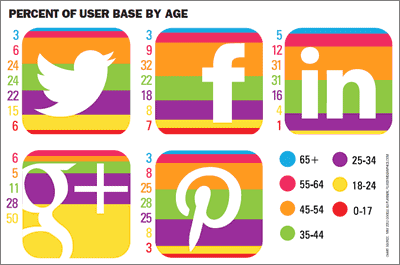Can the digital world get in front of the silver tsunami?
Baby Boomers have always influenced media. Born between 1946 and 1964, they grew up with the television industry. As they
innovated, the world gained email, and satellite TV, and the Internet, and … a whole new way for Boomers to consume content.
Of course, it’s hard to think of 78 million
Americans as a “niche.” Baby Boomers control roughly $230 billion in consumer packaged-goods sales, possess nearly 70 percent of the nation’s wealth and have $2.3 billion in
disposable income. If that’s a niche, then it’s a powerful one. Yet this niche is often ignored — and even scoffed at — by marketers who are focused on younger, more fully
digital demographics.
That’s a big mistake. But to understand where the silver tsunami will carry media in the future, we need to look at what’s being consumed now. This group
still loves its old-school content:
>> The average age of a primetime TV viewer is 51. Adults over 65 watch an average of 7 hours a day;
>> Older listeners make up
one-third of radio news/talk audiences — the largest cohort of listeners;
>> News magazine readers are older than the typical American, with a median age of 49;
>>
Newspaper readers are most likely to be over 65 years old.
And while they’ve certainly been much slower to the digital party, they’re here, and in vast numbers: in June 2012,
Pew found that more than one-half of 65+ers (roughly 21.3 million people) are using the Internet— a record number. Of that group, about 12 percent are using online social networks; 20 percent of
50- to 65-year-old Boomers are on Facebook and its ilk; 91 percent of people over 50 use email.
Surveys show that in terms of influence on purchase or opinion, Baby Boomers and seniors are most
swayed by TV and newspapers.
advertisement
advertisement

Getting Past the Age Thing
This is not a
monolithic group. They are 78 million individuals with distinct consumption patterns related to life stages. A Boomer can be a first-time dad or a repeat grandparent. And there are dramatic
differences in media consumption based on income and education.
There are strong correlations between the higher incomes and higher education of Boomers and their media use: for example,
daily news readership is positively correlated to education; news magazine readers are not only older but wealthier than adults overall. Boomers are the most educated generation in U.S. history. And
they’ve got money.
What do we think is the future of Baby Boomer media consumption? Tablets. Tablet users skew upper income. Boomers currently make up 27 percent of the tablet
audience, according to comScore. Seniors account for nearly 7 percent of tablet owners, up significantly in the past two years. And when it comes to mobile devices, 65+ers are 28 percent more likely
to choose a tablet over a smartphone.
We predict Baby Boomers will sway influence from TV and magazines to the tablet. We see:
>> More long-form content. Whether it’s
editorial or paid marketing content, Baby Boomers and seniors have the time and desire to dig deep;
>> Willingness to pay for subscriptions. This is a generation that still values and
therefore pays for news. The pride they take in their own accomplishments transfers to the work of others, so they subscribe at higher rates than younger age groups;
>> Tune in next week on
a tablet near you! Older eyes and bodies can lead to device fatigue. Combine a familiar concept — the news reporting/fiction “serials” of Boomer youth — with the advantages of
digital and you’ve got a winner. This trend also speaks to the way older adults create emotional connections with media and media personalities (my mom skips events if they conflict with her
standing date with Rachel Maddow);
>> Convenience and portability. Affluent boomers are always on the move, and tablets jibe well with the lifestyle they enjoy. On-demand, mobile, and
personalized videos, books and news — a very VIP feeling that resonates especially well with this cohort.
What does this mean for media planners? You can’t depend on a Baby
Boomer stumbling over ad banners on a news site. They’ll use an app or have a digital magazine delivered and will skip from one article/video to another without ever leaving the tablet
environment. Advertising will need to be:
>> More relevant (though the “Me” generation stereotype is bunk, it is, well, all about Me);
>> More contextual (as we age,
our decision-making becomes more context driven);
>> More innovative;
>> More beautiful (as we age, our brain functions shift to the right/visual side);
>> More
emotive (the right side of the brain also is sensual and emotional);
>> More action-oriented (Boomers have never and will never simply observe, and your brand doesn’t want them
to).
All effective media plans are based on knowing the customer. In this case, know your Baby Boomer. Which of the 78 million are you trying to reach and motivate? Understanding your
target will help you determine which media channels they are currently using, and which will grow in importance. That will determine your path to Baby Boomer success.